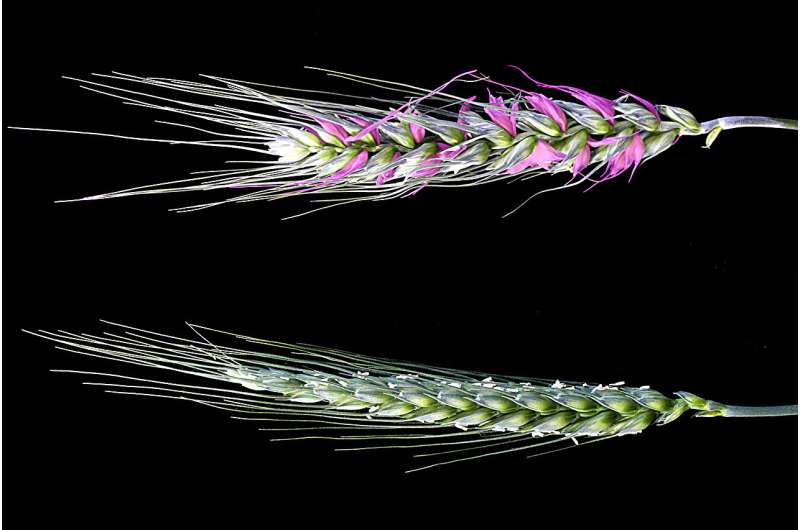This article has been reviewed according to Science X's editorial process and policies. Editors have highlighted the following attributes while ensuring the content's credibility:
fact-checked
peer-reviewed publication
trusted source
proofread
Gene could unlock greater wheat yields for a growing population

A study from the University of Adelaide has discovered molecular pathways regulated by a gene traditionally used to control wheat-flowering behavior could be altered to achieve greater yields. The research was published in Current Biology.
The gene is called Photoperiod-1 (Ppd-1) and it is used regularly by breeders to ensure wheat crops flower and set grain earlier in the season, avoiding the harsh conditions of summer. However, there are known drawbacks.
"While this variation benefits wheat productivity by aligning pollination and grain development with more favorable environmental conditions, it also penalizes yield by reducing the number of grain-bearing florets and spikelets that form on the wheat inflorescence," says Dr. Scott Boden, a Future Fellow at the University of Adelaide's School of Agriculture, Food and Wine.
By examining genes whose expression is influenced by Ppd-1, Dr. Boden's research team discovered two transcription factors that can be edited to influence the number and arrangement of grain-bearing spikelets that form on a wheat ear, as well as the timing of ear emergence.
"The deletion of one transcription factor, called ALOG1, increases branching in both wheat and barley, which normally form unbranched inflorescences, and suggests that this gene could be a major regulator of unbranched spikes in the Triticeae family of crops," Dr. Boden says.
"The knowledge gained will inform breeders about gene targets of Ppd-1, for which we can use genetic diversity to design genotypes that might yield better."
Dr. Boden's research team is now furthering its work with field trials at the University's Research Enclosure to test for performance of the gene-edited lines under field conditions.
Serendipitously, German researchers discovered a similar effect for the ALOG1 transcription factors in barley, which provides exciting clues to the evolution of unbranched inflorescences of wheat and barley inflorescence, relative to those of rice and corn which display more elaborate branching patterns.
Australia is the world's largest exporter of wheat and produced 36,237,477 metric tons of the crop in 2022—the country's largest annual harvest on record.
"Wheat contributes 20% of calories and protein to the human diet, and scientists and breeders need to find ways to increase grain yields of wheat by between 60–70% by 2050 to maintain food security for the growing global population," says Dr. Boden.
"Studies like ours are particularly important because they provide a list of gene targets that can be used with new technologies, such as transformation and gene editing, to generate new diversity that may help improve crop productivity.
"We anticipate our research will lead to further discoveries of genes that control spikelet and floret development in wheat, and in doing so, benefit the development of strategies for improving the yield potential of wheat."
More information: Adam Gauley et al, Photoperiod-1 regulates the wheat inflorescence transcriptome to influence spikelet architecture and flowering time, Current Biology (2024). DOI: 10.1016/j.cub.2024.04.029
Journal information: Current Biology
Provided by University of Adelaide




















